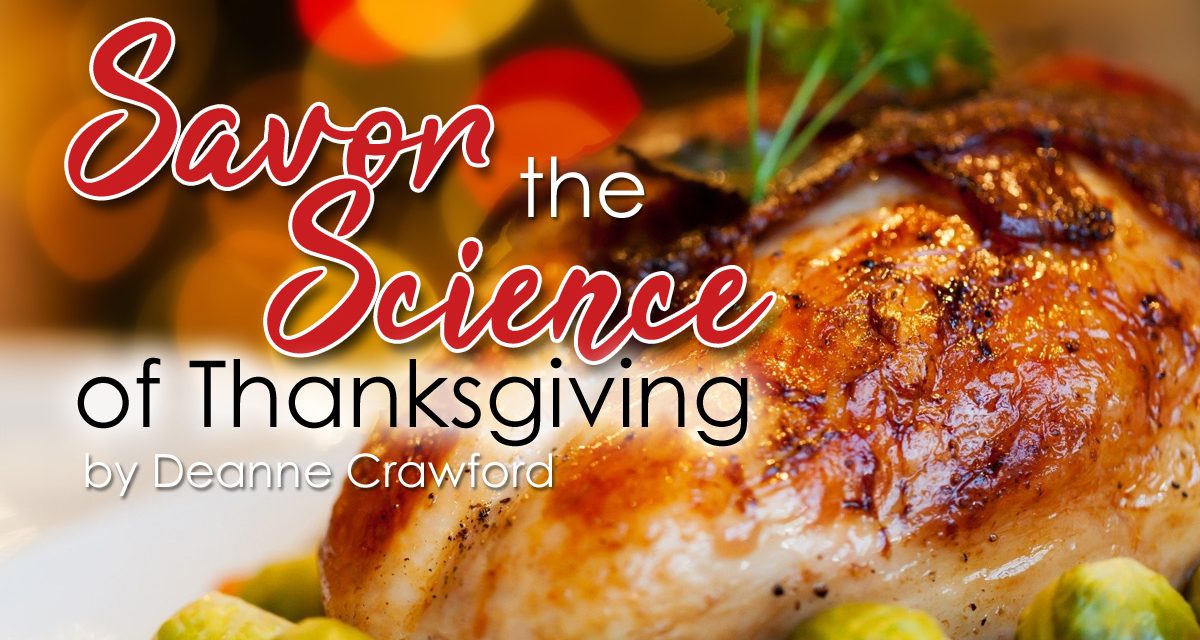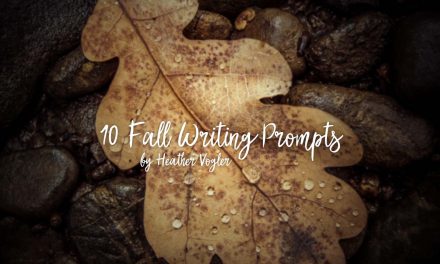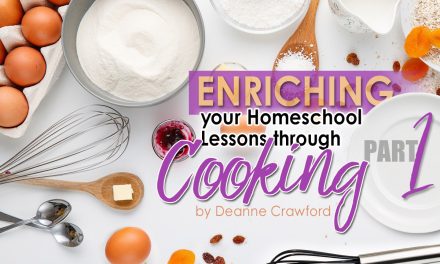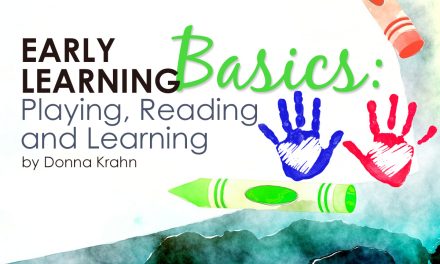Thanksgiving is a time to reflect on the many blessings we have experienced over the year. It is also a time that we set aside to teach our children the historical meaning behind this great day. This year, I invite you to expand on the holiday with a hands-on, exploration of favored holiday foods.
The star of Thanksgiving is the turkey. Whether you smoke, roast, or “Instant Pot®” your main dish, the delicious smells and sights are eagerly anticipated throughout the year. But at the end of the meal, what happens with the carcass? Toss it? Make bone broth? While either option is popular, this year before you make your final decision, use a wing or leg bone to teach your children. This is a fun demonstration of bone strength and weakness. Select a turkey bone and rinse it well. Ask your children to try and bend the bone. Pour vinegar into a glass jar and cover it with a lid. Check the bone daily for one week. What changes are noticed? Is the bone bendable? Children will discover that the bone soaked in vinegar becomes flexible or bendy. Vinegar is a mild acid that dissolves the calcium in the bones. Explain that calcium is a core nutrient for building strong bones. Enjoying calcium-rich foods like yogurt or cheese helps build strong bones. Interestingly, research has shown that diets containing large amounts of processed foods (salt) or soda may cause calcium to leach from bones. If you have older children, extend this activity by soaking bones in soda, plain water, or water with a high salt concentration and vinegar. What differences or similarities do they observe?
Bread or rolls are a familiar Thanksgiving meal companion that offer numerous, fun science activities. First, let us look at the hearty sourdough bread. Enjoyed since ancient times, sourdough has a certain mystery about it. But science has confirmed that the secret is more microscopic than mysterious. Found in the environment, microscopic wild yeast is a different strain than packaged yeast found at the grocery store. It lives in the air, as well as on grains, fruits, and plants. To harness the power of wild yeast, simply mix flour and water and allow it to ferment at room temperature. As soon the flour and water are mixed, an enzyme called amylase begins to break down the flour starches into sugars. Wild yeast and bacteria both feed on these sugars during fermentation. Also found in the sourdough (and many cheeses) is lactobacillus, which feeds on sugar and produces two kinds of acid as a by-product: lactic acid that gives the hearty, rich flavor and acetic acid that give sourdough its tang and punch. As a family, create a sourdough starter and make a loaf of sourdough to share throughout the holidays. Worth mentioning: this process takes several days to complete so allow plenty of time for the full effect.
Does your family prefer traditional yeast rolls? Activities abound for learning! Yeast is a living organism, a tiny, single-celled fungus that can only be seen under a microscope. It is so small that there are hundreds of billions of healthy yeast cells in one packet of dry yeast. While small, yeast is mighty and the hardest worker in bread (roll) making. Different types of packaged yeast are available, but for baking purposes, active dry or instant yeast is preferred. For our activity, active dry yeast will work best. First, we want to show that yeast is alive by making a yeast solution. Mix one package (1/4 oz) of active dry yeast to 1/2 cup warm water (110° to 115°F) and 1 teaspoon sugar. Stir gently to dissolve. Observe what happens (allow 3-5 minutes). The warm water wakes up the yeast (activating it), and the bubbling that you see is carbon dioxide being released as the yeast “eats” the sugar. Extend this activity. Try yeast at different water temperatures. What differences do you observe? Add salt to your yeast mixture. What impact does salt have on the yeast solution? Learn more science of yeast at Red Star.
Freshly made bread is incomplete without butter. Butter is a super fun and easy activity for children of all ages to make and only takes a few minutes. All you need is heavy whipping cream, a mason jar with a lid, and a bit of shaking power. Fill the jar half full with whipping cream and seal tightly. Now shake. It will take about 15 minutes for results. Give children a short rest by stopping to check the progress after 5-7 minutes. You should notice a clump of creamy butter surrounded by liquid. This liquid, called buttermilk can be saved for other recipes. Buttermilk is slightly more acidic and may taste sour but is delicious in pancakes or biscuits!
Another beloved Thanksgiving side is the cranberry! There are so many fun things you can do with fresh cranberries. Creating a garland to feed our feathered friends outside during the colder weather is a family favorite at our house. Other fun activities include putting fresh cranberries in a cup of water to see if they sink or float. (They will float since cranberries have four air pockets in them!) What about making cranberry slime? YouTube® has a great tutorial! Love cranberries? Check out our Cranberry unit study here.
Let’s complete our thanksgiving fun with dessert! Pumpkin pie has been a centerpiece of the Thanksgiving celebration for hundreds of years, although the pie served today is different than the one of yesteryear. What’s Cooking America traces the history of this beloved dessert and is a fun read for all ages. If you have access to fresh pumpkin, check out Mama Rosemary’s blog for a fun, family experiment to recreate an original pumpkin pie. Personally, I am not a pumpkin fan (gasp!) but may give this a whirl for my family that loves pumpkin!
I appreciate you joining me to savor the tastes of Thanksgiving! Have a blessed Thanksgiving.
~ Deanne





